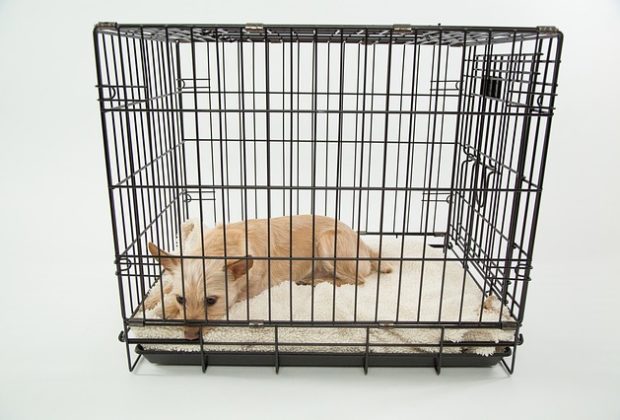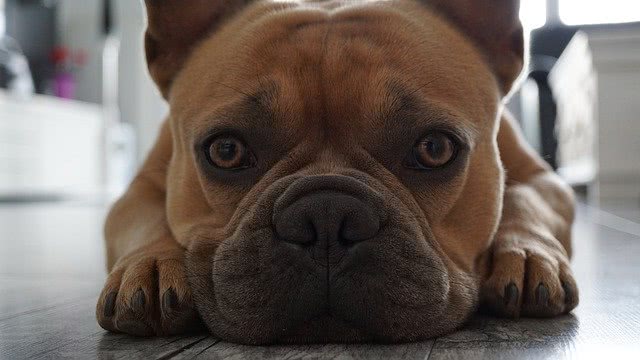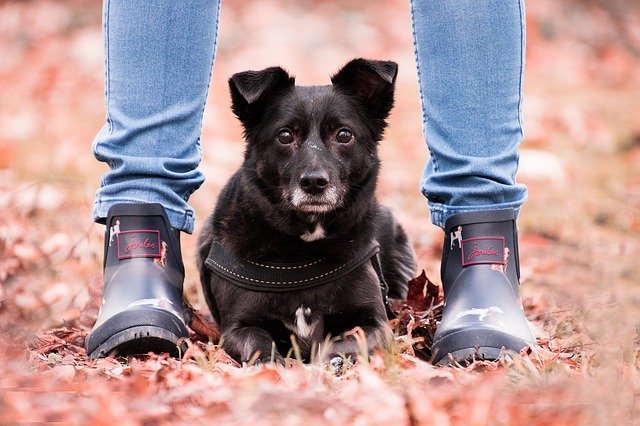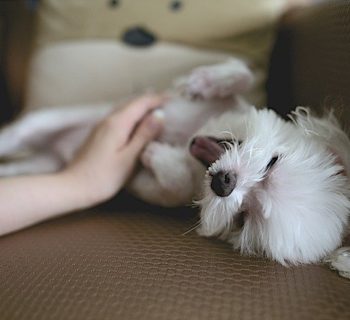If you’re just getting a dog for the first time, crate-training might be uncharted territory for you. While you’ve seen other dog owners make use of this very powerful tool, you may find it hard to imagine your own pooch surviving in a crate.
In this article, we’ll answer some of your questions about crate-training dogs. Why you should crate train your puppy/the benefits of crate training and some of the best practices when training in this manner. However, before those, we’ll answer the question: How long does it take to crate train a puppy?
Table of Contents
How Long Does Crate Training Take
First, our canines will learn and improve at different paces like us. Some will learn faster than others, and some will need extra time. Two essential things they all need during training are consistency and patience. The latter cannot be overemphasized, and its rewards are always worth it.
So, basically, it’s hard to say precisely how long it will take to crate-train your pup. Some will learn in as little as a few weeks or even days, and others may take months to learn. The training process can be a fun bonding experience for both you and your dog if you keep an open mind and heart and are willing to walk through the process with your dog.
How to Crate-Train Your Puppy
Below is a step-by-step guide to crate-training your puppy or even an adult dog. Again, with our fur babies, patience is essential. They need time to learn everything you have to teach, especially young puppies or older dogs that were not crate-trained until then. Don’t yell or scold your dog during training. There are healthier, less-forceful, and generally more practical steps that you should implement instead.
Step 1: First Things First
Before showing your dog to his crate each day, whether for his daily crate-training session or just putting him in it for a few hours while you go grocery shopping, you first have to take him out to potty.
You should also create time for exercises and other fun activities before crate-time. This is particularly important if you own a high-energy breed, e.g. the GSD, huskies, or the Rottweiler.
Step 2: A Positive Association
Your pup has to associate the crate with lots of positive experiences. It should be a place any dog would love to be in. Keep the crate supplied with some of his favorite toys, cozy blankets, and even treats on days he needs extra motivation to go in.
Also, try not to place your puppy’s crate in an isolated area, or he’ll learn to associate the crate with an unpleasant experience, and you don’t want that.
Aside from treats, also feed your pooch his meals in the crate. If he feels uncomfortable entering the crate at first, move the bowl closer to the cage’s entrance. As he makes for the meal, gradually move the meal into the crate fully. You can close the door with him inside when you observe that he is starting to get comfortable enjoying the treats and dinners inside the cage. And unless he falls asleep, you want to immediately open the crate for your pooch to come out when he finishes his meals.
Step 3: Improving Duration With Treats
One of the most important things you want to achieve with this step is teaching your puppy to stay in his crate for a certain length of time. You can begin with just 5 minutes.
Start by instructing your dog to go into his crate, then throw a treat or his favorite toys inside. He’ll go after it, and when he does, praise him and gradually close the crate door for 5 minutes.
Your dog may not understand the “go to your crate” order on the first few occasions, so you may have to repeat it as many times as possible and throw in a treat or toy to reinforce the behavior any time he gets it.
While he is inside the crate, stay near and when the time elapses, praise him, take a 10 - 15 minute break and repeat the instruction. This time, though, increase the duration to 10 or even 15 minutes repeating the treat and food incentive after instructing him to go in. You can change things up by tossing him a shorter duration between the lengthier ones e.g., 10 minutes, 2 minutes, 15 minutes, 5 minutes, etc.
Step 4: Gradually Increase Your Distance
With your puppy inside his crate, close the crate door and sit some distance away. Halfway across the room is fine. When the duration elapses, open the crate, hand him another toy or treat it as a trade for your time away from him. Do this in every training session, increasing and reducing your time apart until you’re finally able to leave his sight without him getting nervous.
Note: You don’t want to have very young puppies in the cage alone for too long, even during training. Try to keep their time in the enclosure under 30 minutes.
Step 5: Real Life Without Treats and Toys
Your puppy will not always have treats and toys when he is inside the crate. You can start preparing him for the real world by letting him stay in his cage for a few minutes without the toys and treats. Increase the duration of “toyless and treatless” sessions as he crushes smaller minutes.
Practice the “toyless and treatless” methods by doing the following:
Give him the treats and toys, then shut the crate door and leave. Once he finishes the treat, stay out of sight and delay your return. You want your dog to be okay staying in the crate without the treats, food, or entertainment, and this should help you achieve that goal.
Note: Only pick safe and suitable toys for your puppy. Puppies can damage their teeth on some toys or even choke on smaller pieces.
Step 6: Crate as Often as Possible
You want your puppy to grow used to spending time in the cage as quickly as possible while also not rushing him. Make him use crates in real situations, e.g., sleeping, eating, and during car rides. Your pup may protest being made to spend time in the crate by whining, but this shouldn’t be a reason to let him out until he calms down. Why? Because if he learns that his whining gets you to bend the rules, he will undoubtedly take advantage just like any young child would.
That said, when applying crating in all situations, you want to start with a few minutes or short durations. You shouldn’t drive around with him in his crate for hours at a stretch. Build on smaller durations and increase as your pup grows accustomed to being in the crate.
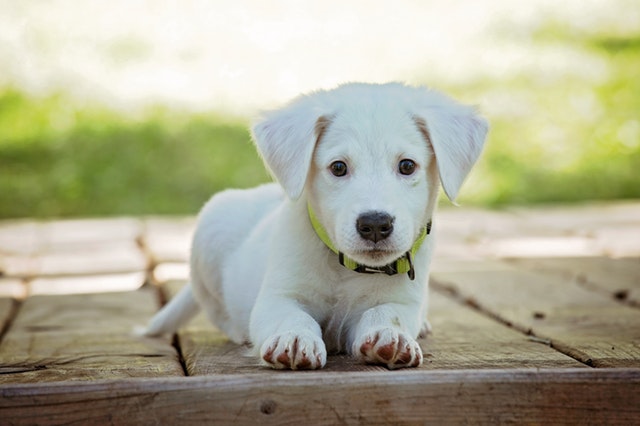
Benefits of Crate-Training a Puppy
There are so many benefits of crate training for both you and your puppy, and these benefits will be discussed in this section.
You Prevent Unpleasant Situations
Like our human babies, our pooches will repeat behaviors they believe are acceptable until you correct them. Now, with a new canine, you want to reward and encourage the desired behaviors. This helps you prevent the “bad” or undesirable ones and helps your pup understand that there is a difference between the two (good and bad).
A Noise-Free Area
Your canine benefits more in this aspect. A crate-trained dog has a safe space to relax and is free from outside distractions. Like us, our dogs can get stressed and nervous in certain situations, including house parties, thunderstorms, roughhousing kids, and even during busy holiday periods. A crate provides them a safe haven.
An Excellent Tool for House-Training
A crate is a perfect tool for house-training your new pooch, especially if you are only just able to take him outside for exercises and other fun activities.
Easier to Transport
Crates make it a lot easier for you to transport your dog in the car. It is also more comfortable for your dog and provides him with the privacy he needs when and if he has to be “away” from so many others.
A Safe Haven for Convalescence and Privacy
Your pup will need a safe place for recovery that is free from distractions from other pets, kids, and adults in the home. He will feel happier, safer, and less likely to have issues after surgery or clinical admissions.
Keeps Your Property Safe
Proper crate training helps to protect your house properties. This includes carpets, furniture, and other possessions in your home while you’re away.
Prevention of Injury and Toxicity
Crate-training your pup will help to prevent hazards and injuries from ingesting toxic materials. Our pups are curious animals, and left alone, they will try to explore the home. This may mean that they freely come in contact with objects or materials that they have no business being near. Plus, you also prevent the risk of common heatstroke hazards on hot days.
Things to Note When Crate-Training Your Puppy
While a crate will help manage and cut down several undesirable behaviors from our canines, it is still not the answer to everything and, when misused, can have the opposite effect. So, note the following when crate-training your pooch.
The crate should never be used as a punishment. If you do this, your pup will come to associate the crate with being alone and fear.
You should never leave your pup in a crate for too long. Poor social interaction levels and inadequate exercises can cause depression and even anxiety in dogs. If you have to be away for a long time (or at work), you can enroll him at a doggy daycare, hire a pet sitter, or take him to work if your job allows it.
You should never leave very young puppies (specifically those under 6 months of age) in crates for over 2 hours. They often can’t hold it in for that long. It’s the same for adult canines undergoing house training. While the latter can, they usually do not understand that they’re not supposed to do it in the crate.
Common Problems with Crating
Especially in the first few days, weeks, or months, your dog may whine or cry in the night when left alone. Now, this can be tricky, as it is hard to tell whether they are only calling because they are in a crate or because they want to eliminate.
If you suspect elimination might be a reason, let him out and take him back to the crate. If he continues to whine, he probably just wants to come out. If you’re confident that his cries are just because he wants out, yielding to his request lets your pooch know he can cry his way out of the crate and other problems with you. And, of course, this sets you back on the training.
Separation anxiety is a common problem with dogs. If your pup suffers from separation anxiety, you shouldn’t use the crate as a way to keep him in check. You will only increase his anxiety levels by doing so. You should consult a professional for help with the separation anxiety as a crate will not solve all.
Where Should I Put My Dog’s Crate?
First, you don’t want to keep your pup’s crate too far away from you. It is terrifying for them, especially frightening for young puppies, and can also trigger separation anxiety in some.
Whether to let your pup sleep in the same bedroom with you will be decided by factors like other pets in the home (it will not be very fair to let only one dog in when you have three others outside), the locations available that meets the requirements below, and your personal preferences.
- You should never place the crate next to a radiator, in direct sunlight or on a heating or cooling vent.
- Keep the crate away from electric cables, cords, or houseplants that your pup can easily grab from inside the crate.
- Keep the crate in a low-traffic area. A crate and the surrounding should be his quiet and safe haven, not an anxiety trigger.
Ever had to crate-train a dog? How long did it take to crate-train your canine?? And if you know other helpful crate-training tips, share in the comment section below.
About the Author
Kirsten Heggarty
Kirsten created The Pet Handbook with the aim of sharing her knowledge about pets, pet food, healthy habits, and more. All of her advice is based on years of her own experience with her pets, and feedback that she has received from grateful readers about her tips. If you want to know more please read the About Me page.

